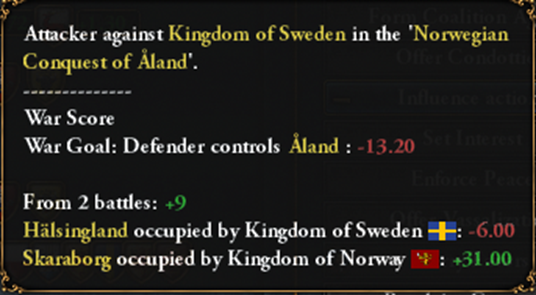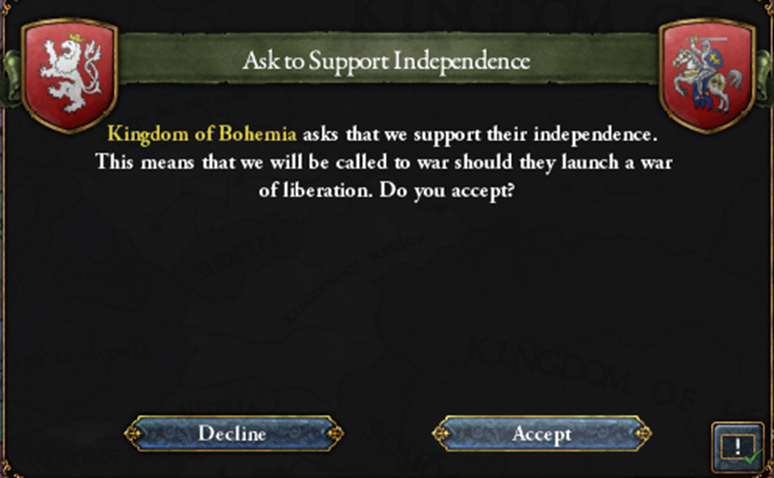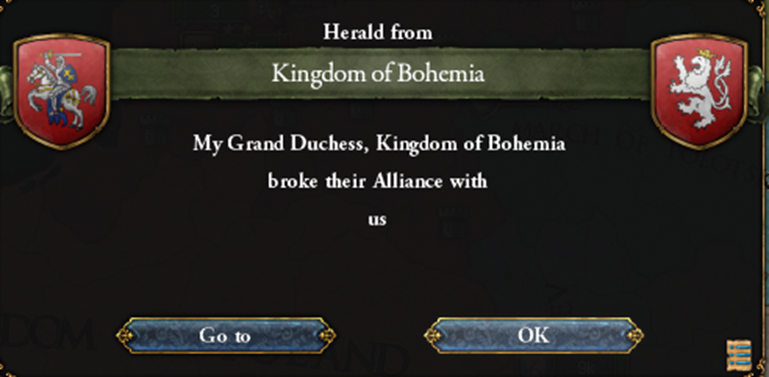Early Modern Lithuanian History – HIST1611 – 1491 AD – 1503 AD – The Baltic War of 1497 - Lecture Notes - Professor: Jonas Matas
Grand Duchess Audra tasks her son and heir Mantvydas with putting down the Polotskian rebellion. Mantvydas had received a military education from a young age and showed significant potential. On January 1492, Mantvydas heads out for the Polotskian border with the royal army.
He quickly crushes the rebellion in two decisive battles, at Polotsk and Daugpils. His tactics emphasize effective defensive planning, relying on the enemy to tire and weaken themselves.
Mantvydas is celebrated in Polotsk by the local nobility. His efforts during the Polotskian rebellion cement Polotsk’s vassalage to the Grand Duchy. Similarly, Prince-Consort Rurik continues curry diplomatic favors with his Polotskian relatives to reduce tensions.
December 1492, France officially surrenders to Peitau and its allies. Peitau is granted independence, along with large tracts of land from the Duchy of Toulouse. Burgundy and Flanders, who had supported Peitau’s rebellion are also granted independence. Lotharingia manages to annex Rethelois, a border province. As a result legitimacy of the French monarchy is severely crippled.
Taking advantage of Lithuania’s internal issues, Novgorod fully integrates Smolensk and expands further south into Ryazanian territory.
Further south, the Zaporizhian Hetmanate continues its eastward expansion.
July 1493 – The Queen Euvje Krabbe of Norway starts another conquest against the Swedish, hoping to consolidate Norwegian control over Scandinavia.
Bohemia’s militaristic dominance over the HRE is stopped September of 1493, where they loose a war against coalition of minor states. As a result Tirol’s holdings are expanded. Additionally, the Archduchy of Austria is reestablished under the rule of Duke Freidrich von Habsburg. The King of Bohemia killed during the war and his crown passes to Duke Freidrich, whose father was a distant cousin of the Bohemian king. Unwilling to lose autonomy, Bohemian nobles quickly dispatch emissaries to Lithuania asking for its support for resisting Austrian control. Seeking to preserve a strong ally, Lithuania accepts.
March 1494, Norway finishes its war with Sweden, annexing may border provinces, including the key city of Stockholm.
April 1494, after Austrian attempts to enforce rule over Bohemia, the nobles revolt in defiance. Lithuania quickly pledges to the cause. The nobles elect Dobieslav Lobkowicz among their own to become the new king of Bohemia, known as Dobieslav II.
After the vacuum left by the fall of the Sweden, the Duchy of Smalond continues to grow in economic and geopolitical importance. Despite Lithuania’s support of Smalond in its bid for independence from Sweden, by the end of the 15th century Smalond’s Baltic ambitions sour relations, resulting in an economic rivalry.
November, 1494 – The war against Austria concludes before Lithuanian involvement. Bohemia is granted independence and its status as elector of the HRE is reaffirmed.
January 1495, Croatia-Hungary passes a series of reforms harmonizing Croatia and Hungary’s laws and customs. This includes a harmonization of inheritance laws and the merging of the noble estates. As a result, Hungary is fully integrated into the Kingdom. Saul III now rules one of the largest kingdoms in Europe.
February 1497 brings one of the most significant event in the religious fabric of Europe. In the decades leading up the 16th century many people had been questioning the authority and authenticity of the Catholic church (including those in Lithuania). This general discontent with the extreme wealth of the Catholic church compared to the general populace, exacerbated by the announcement of a new set of papal indulgences, culminated in a general movement against papal authority. This movement was first organized in Berlin, where many theologians officially disagreed with Pope and refused to market the new indulgences.

August 1497 – The Novogorodian army enters Povenets, a small realm in the North. Worried about Novgorod’s increased confidence and aggression, Grand-Duchess Audra demands that Novgorod withdraw its troops and to respect Povenets’s autonomy. When Novgorod declines, Audra declares war on the Principality. Unlike previous wars against Novgorod, this time Poland is unwilling to turn a blind eye and joins on Novgorod’s side. In response, Lithuania calls in Bohemia, Croatia, Norway and Muscovy. Thus beginning the
Baltic War of 1497.
Lithuania immediately assaults the fort of Velikiye Luki, hoping to quickly overwhelm Novgorod and march on the capital.
Meanwhile Croatia and its subjects begin their siege of Southern Poland.
Poland also crosses over to Lithuanian territory to siege Klaipedia. The Polish and Danish navy also established a coordinated blockade of Lithuanian ports, heavily crippling the Lithuanian economy.
June 1498, Lithuania gains control of Velikiye Luki, allowing the troops to revert attention back to Klaipedia. Croatian troops engage the Poles, and are reinforced by the Lithuanians, halting the Polish assault.
Despite, the loss at Klaipedia, the Poles successfully defeat the Bohemians in Pomerania.
By May 1500 Novgorod overwhelms Muscovy, forcing their surrender. As a result, Novgorod annexes key Muscovite provinces.
07.01.1500 – Croatian troops defeat a large Polish contingent at Tarnow. This strategic victory allows Lithuania’s allies to rush into Polish territory. By December, 1500 Lithuanian troops are sieging the capital of Warsaw.
Warsaw falls in March 1501, and the Polish King is forced to surrender. Poland is required to annul its treaties with Novgorod and pay the Lithuanian coalition heavy reparations. Soon after Bohemia also exits the war in a white peace, followed by Norway in February of 1502. The Grand-Duke grants additional privileges to the Szlactha to ensure their support of the lengthy war.
The first splinters appear in the Greek Empire, when Bulgaria declares its independence.
November 1503, the Treaty of Ostrov is signed by the Lithuanian forces and Novgorod. Although, a victory for the Lithuanian’s it comes at a massive human cost. Land is seceded to both Lithuania and Polotsk, and Novgorod is required to return significant amounts of Muscovite territory.





























































































